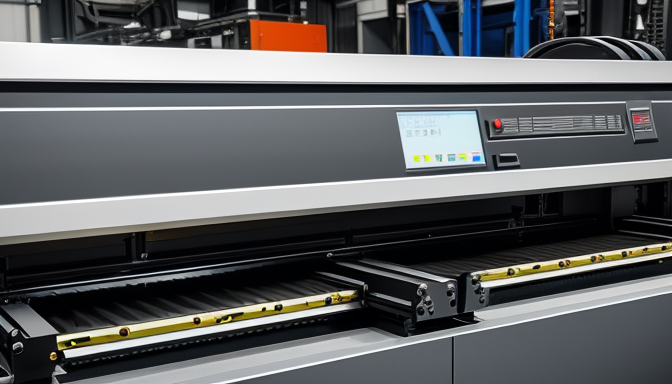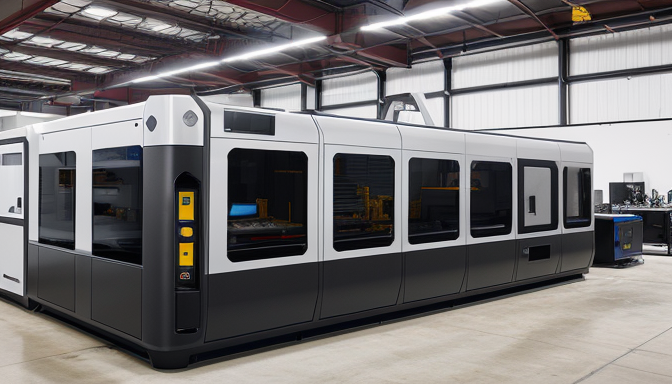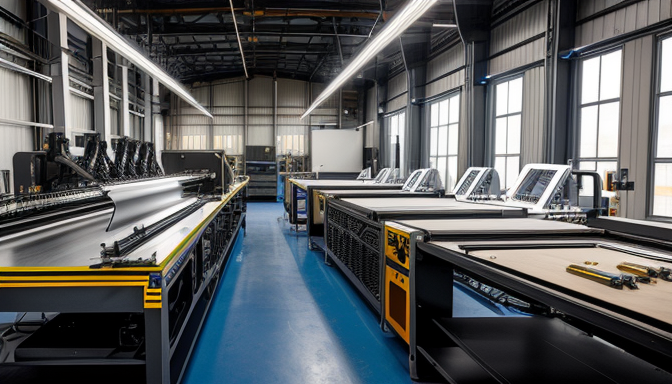Laser cutting is a fascinating technology that has changed the way we think about manufacturing and design. Imagine a tool that can slice through metal, wood, or plastic with pinpoint accuracy. It’s almost like magic! But it’s not just about cutting; it’s about precision, speed, and versatility. In this article, we will dive deep into the world of laser cutting, exploring its costs, weight capacities, techniques, sizes, and applications across various industries.
At its core, laser cutting uses a focused beam of light to cut materials. This method is not only efficient but also reduces waste. The laser can cut intricate designs that traditional methods struggle with. Think about it: a machine can create detailed patterns that would take hours to do by hand. This capability opens up a world of possibilities for designers and engineers alike.
From automotive to aerospace, laser cutting is making waves in multiple fields. Industries are embracing this technology because it allows for faster production times and higher quality products. Whether it’s creating parts for a car or crafting delicate jewelry, laser cutting is the go-to method for many manufacturers. The precision it offers means less rework and better end products.
However, it’s essential to understand the nuances of laser cutting. Not all laser cutting machines are created equal. They come in various types and sizes, each suited for different materials and applications. This article will help you navigate the complexities of laser cutting, ensuring you make informed decisions whether you’re a business owner or just curious about this technology.
Laser Cutting Cost
Understanding the cost factors associated with laser cutting is essential for businesses looking to harness this technology. When diving into the world of laser cutting, you might wonder, “What are the real costs?” It’s a fair question! The expenses can vary widely based on several factors. Let’s break it down.
First, there’s the initial investment in machinery. Laser cutting machines can range from a few thousand to several hundred thousand dollars. The price depends on the type, size, and capabilities of the machine. For instance, a small desktop model might be affordable for hobbyists, while industrial-grade machines designed for heavy-duty work can be quite pricey. But don’t let the high prices scare you off! Many businesses find that the efficiency and precision of laser cutting lead to significant long-term savings.
Next up, we have materials. The cost of materials can also fluctuate based on what you’re cutting. Common materials like wood, acrylic, and metal each come with their own price tags. For example:
| Material | Average Cost per Sheet |
|---|---|
| Wood | $20 – $50 |
| Acrylic | $30 – $100 |
| Metal | $50 – $200 |
Another key factor is the operational costs. This includes electricity, maintenance, and labor. Laser cutting machines are often energy-intensive, so keeping an eye on your power consumption is a must. Regular maintenance is also crucial to ensure your machine runs smoothly and efficiently. Think of it like taking care of a car; if you neglect it, you’ll end up with costly repairs down the line.
Lastly, consider the volume of work. The more you cut, the more cost-effective it becomes. Many businesses find that as they scale up their production, the per-unit cost of laser cutting decreases. It’s like buying in bulk; you save more the more you buy!
In summary, while the initial costs of laser cutting can be high, the benefits often outweigh the expenses. By understanding the various cost factors—machinery, materials, operational costs, and volume—you can make informed decisions that align with your business goals. So, if you’re considering laser cutting, weigh these costs carefully. It might just be the investment that takes your production to the next level!

Laser Cutting Weight Capacity
When it comes to laser cutting, understanding the weight capacity of the machines is crucial. Why? Because not all materials are created equal. Some are heavier, while others are light as a feather. If you want to cut metal, wood, or even plastic, knowing how much weight your laser cutting system can handle will save you time and headaches.
Each laser cutting machine has its own weight limits. These limits depend on several factors, including the machine’s design, the type of laser used, and the power output. For instance, a CO2 laser cutter can typically handle lighter materials like acrylic and wood, while fiber lasers are better suited for cutting metals. It’s like choosing the right tool for the job—pick the wrong one, and you might end up with a mess.
Let’s break down the weight capacities a bit more:
| Machine Type | Weight Capacity | Best Materials |
|---|---|---|
| CO2 Laser Cutter | Up to 200 lbs | Acrylic, Wood, Fabric |
| Fiber Laser Cutter | Up to 1,000 lbs | Metal, Aluminum, Steel |
| Hybrid Laser Cutter | Varies (up to 500 lbs) | Multiple Materials |
As you can see from the table, the weight capacity varies significantly between different types of machines. This means if you’re planning a project that involves heavy materials, you’ll need to choose your equipment wisely. Imagine trying to cut through a thick steel plate with a machine designed for lightweight materials—it’s not going to end well!
Moreover, the weight capacity is not just about what the machine can physically hold. It also affects the cutting speed and quality of the cut. Heavier materials often require more power and longer cutting times, which can impact your production timeline. So, if you’re in a hurry, you might want to reconsider your material choices.
In conclusion, always check the specifications of your laser cutting machine before starting a project. Knowing the weight capacity will help you avoid costly mistakes and ensure that you achieve the best results. Whether you’re a hobbyist or run a manufacturing business, understanding these limits can make all the difference in your cutting projects.
Laser Cutting Techniques
When it comes to laser cutting, the techniques used can make a world of difference. Imagine you’re in a kitchen, crafting a gourmet meal. The tools you choose—knives, pans, or blenders—determine the outcome. Similarly, in laser cutting, the method you select impacts precision, efficiency, and the overall quality of the finished product.
One of the most common techniques is CO2 laser cutting. This method uses a gas laser and is particularly effective for cutting materials like wood, plastics, and textiles. The beauty of CO2 lasers lies in their versatility. They can produce intricate designs with ease. Think of it as a chef expertly slicing vegetables into perfect julienne strips. The precision of CO2 lasers makes them a favorite in industries ranging from signage to fashion.
Another popular technique is fiber laser cutting. This method utilizes a solid-state laser, which is more efficient than CO2 lasers, especially when it comes to cutting metals. Fiber lasers are known for their speed and accuracy, much like a racing car zooming around a track. They can cut through materials like stainless steel and aluminum with minimal effort, making them ideal for the automotive and aerospace sectors.
Then, we have Nd:YAG laser cutting. This technique stands out for its ability to cut through thicker materials. It uses a neodymium-doped yttrium aluminum garnet crystal to generate laser light. Think of it as using a heavy-duty knife to slice through a thick steak. Nd:YAG lasers are excellent for applications that require high power and precision, such as in medical device manufacturing and heavy machinery.
Moreover, there’s the ultrafast laser cutting technique. This method employs short bursts of laser energy to create precise cuts without generating much heat. Imagine a delicate artist painting fine details without smudging the canvas. Ultrafast lasers are perfect for materials that are sensitive to heat, such as certain plastics and electronic components.
Each technique has its strengths and weaknesses. Here’s a quick comparison:
| Technique | Best For | Material Types | Advantages |
|---|---|---|---|
| CO2 Laser Cutting | General Cutting | Wood, Plastics, Textiles | Versatile, Cost-Effective |
| Fiber Laser Cutting | Metal Cutting | Stainless Steel, Aluminum | Fast, Accurate |
| Nd:YAG Laser Cutting | Thicker Materials | Metals | High Power, Precision |
| Ultrafast Laser Cutting | Heat-Sensitive Materials | Plastics, Electronics | Minimal Heat Damage |
In conclusion, the choice of laser cutting technique is crucial. It’s not just about what you’re cutting but how you’re cutting it. Just like a chef wouldn’t use a butter knife to carve a turkey, manufacturers must choose the right laser technique for their materials and needs. Understanding these techniques will help businesses make informed decisions, ensuring they achieve the highest quality in their products.

Laser Cutting Sizes
When it comes to laser cutting machines, size matters—quite a bit, actually. The dimensions of these machines can make or break your production capabilities. Imagine trying to fit a large piece of metal into a tiny box. It just won’t work! So, understanding the different sizes available is essential for any business looking to invest in this technology.
Laser cutting machines come in various sizes, each designed to handle specific tasks. For instance, small desktop models are perfect for hobbyists or small-scale operations. They can cut materials like wood and acrylic, making them ideal for crafts and prototypes. On the other hand, large industrial machines can handle hefty materials like steel and aluminum, often used in manufacturing and construction.
Here’s a quick overview of the typical sizes:
| Machine Size | Typical Applications | Material Thickness Capacity |
|---|---|---|
| Small (Desktop) | Hobby projects, prototypes | Up to 1/4 inch |
| Medium (Commercial) | Small to medium businesses | Up to 1 inch |
| Large (Industrial) | Heavy manufacturing, construction | Up to 2 inches |
Each size has its own unique advantages. Small machines are often more affordable and easier to operate, making them accessible for newcomers. However, they come with limitations in terms of material size and thickness. Conversely, larger machines can handle bigger projects but usually require a more significant investment and a dedicated space.
Another factor to consider is the workspace. If you’re working in a tight area, a large machine might not be practical. Think about your workflow and how much space you can dedicate to a laser cutter. It’s like trying to fit a king-sized bed into a studio apartment—something has to give!
In conclusion, choosing the right size of laser cutting machine is crucial for optimizing your production process. Whether you’re a hobbyist or a large manufacturer, understanding your needs will guide you to the right choice. Remember, it’s not just about the cost; it’s about finding the perfect fit for your specific applications.
Frequently Asked Questions
- What is laser cutting?
Laser cutting is a technology that uses a focused beam of light to cut through materials with precision. It’s commonly used in various industries for creating intricate designs and shapes with minimal waste.
- How much does laser cutting cost?
The cost of laser cutting can vary significantly based on factors like material type, thickness, and the complexity of the design. On average, businesses can expect to pay for machinery, materials, and operational costs, which can range from hundreds to thousands of dollars.
- What materials can be cut using laser cutting?
Laser cutting is versatile and can be used on a wide range of materials including metals, plastics, wood, glass, and fabric. Each material requires specific settings and techniques for optimal results.
- What is the weight capacity of laser cutting machines?
Laser cutting machines come with different weight capacities depending on their design and intended use. It’s crucial to evaluate these capacities to ensure you select a machine that can handle your specific materials and project requirements.
- What are the different techniques used in laser cutting?
There are several techniques in laser cutting, including CO2 laser cutting, fiber laser cutting, and crystal laser cutting. Each method has its unique advantages, making them suitable for different materials and applications.
- How do I choose the right size of laser cutting machine?
Choosing the right size of a laser cutting machine depends on your production needs and the size of the materials you’ll be working with. Larger machines can handle bigger sheets but may require more space and investment.
- Is laser cutting environmentally friendly?
Laser cutting can be more environmentally friendly compared to traditional cutting methods as it produces less waste and can be more energy-efficient. However, the environmental impact also depends on the materials used and the disposal methods.
- Can laser cutting be used for prototyping?
Absolutely! Laser cutting is an excellent choice for prototyping due to its precision and ability to quickly produce complex designs. This allows businesses to test their ideas before moving into full-scale production.
